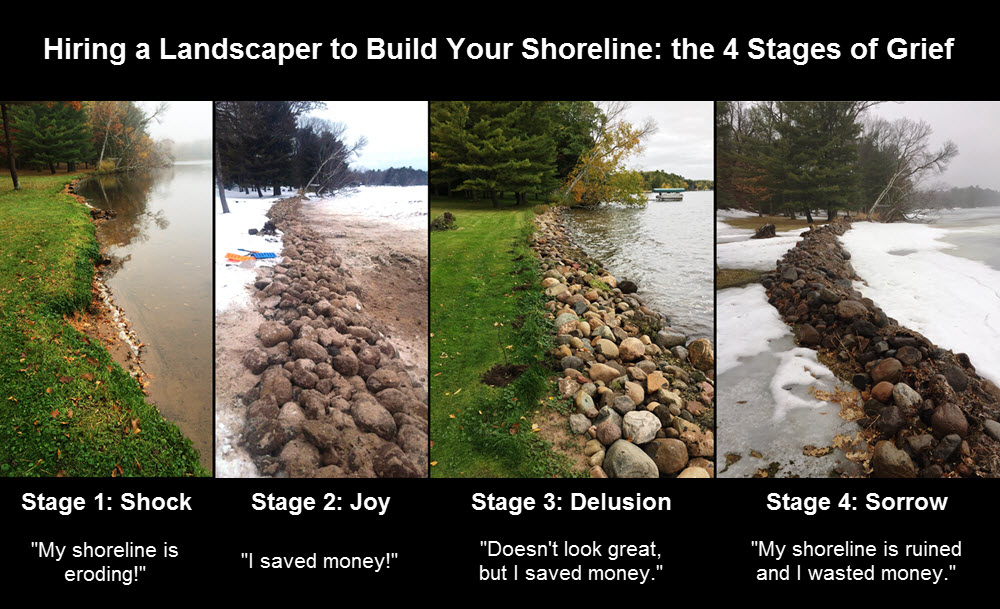The Main Principles Of Shore Protect Team
Table of ContentsThe Facts About Shore Protect Team Revealed3 Simple Techniques For Shore Protect TeamThe Ultimate Guide To Shore Protect TeamLittle Known Questions About Shore Protect Team.7 Easy Facts About Shore Protect Team ExplainedGetting The Shore Protect Team To WorkThe smart Trick of Shore Protect Team That Nobody is Discussing
Decrease in residential or commercial property value: As the area tourism is impacted by erosion, so after that is the economy. Buyers are less likely to look for a beach house that could be destroyed at any type of moment by the impending flooding and disintegration emergency. Subsequently, residential property value can go down greatly and influence the whole area.Whether a beach is just tiny and crowded or has to shut entirely for the safety of the environment and nearby residential properties, this considerably impacts tourist. Subsequently, local economic climates are impacted (https://www.mixcloud.com/shrprtcttm/). Risk of injury: The raised threat of flooding and structural failings creates a boosted danger of injury to close-by visitors and neighborhood members

is home to greater than 84,240 miles of shoreline with 41% of it subjected to the open sea. Coastal engineers supervise of safeguarding the coastline versus modifications by decreasing the destructive impacts of both natural and synthetic events. Shoreline stablizing is directly associated to their job. Beachfront resorts: Due to the fact that shoreline erosion impacts tourist, it affects the success of waterfront resorts.
See This Report on Shore Protect Team
Coastal industrial businesses: No vacationers implies no company. Coastal state parks: State parks that exist along coasts are at risk of damages.
Tough stablizing makes use of man-made structures as security to manage disintegration. The majority of forms of hard stablizing like seawalls and sheet metal are not ideal for shoreline stabilization.
About Shore Protect Team
There's also inadequate proof of their efficiency depending on the sort of coastline and neighborhood problems. Difficult stablizing methods have a tendency to be harder to mount and don't match the all-natural visual, standing out like an aching thumb and hurting regional environments in lots of scenarios. Coastline nourishment is the process of adding shed sand and sediment back to beaches after disintegration has actually taken place.
TrapBags help in the procedure of coastline nutrition by protecting natural ecosystems and enabling plants to grow. While this process can be pricey and is not irreversible, the pros often tend to surpass the disadvantages. TrapBag barriers offer many residential properties that make them optimal for seaside and shore disintegration defense. They're: Ecologically friendly: You can use native soil both to border and to fill up the TrapBags.

The Main Principles Of Shore Protect Team
Easy to mount: Ease of installment means TrapBags can be released promptly in the event of an emergency. They can also be installed with no hefty equipment. Budget friendly: TrapBags are perfect for both tiny and big areas of coastline. They offer an affordable solution to cover tasks of any type of dimension.
The suitable seawall design depends on location-specific aspects, including bordering disintegration procedures. There are 3 main types of seawalls: upright, rounded, stepped, and mounds (see table below).
Natural barriers, such as reef and mangrove woodlands, prevent the spread of tidal waves and the circulation of seaside waters and minimized the flood and surge of water. A cost-benefit method is a reliable means to figure out whether a seawall is suitable and whether the benefits deserve the expense.
Getting My Shore Protect Team To Work
A seawall is a fixed attribute which can clash with the dynamic nature of the coastline and hamper the exchange of debris between land and sea. Benefits and negative aspects of seawalls according to Short (1999) Advantages Drawbacks Lengthy term option in comparison to soft coastline nourishment (https://flipboard.com/@shoreprotec3lpi/shore-protect-team-1h6aacr6z?from=share&utm_source=flipboard&utm_medium=curator_share).

This can trigger beaches to dissipate, rendering them worthless for beach goers. Usually, seawalls can be a successful method to manage coastal erosion, but only if they are built well and out of products that can hold up against the force of recurring wave energy. Some understanding is needed of the coastal procedures and morphodynamics details to the seawall area.
Shore Protect Team Can Be Fun For Everyone
Combined with a high building price, this has actually led to enhancing usage of various other soft design coastal management options such as beach replenishment. Seawalls are constructed from different products, the majority of frequently reinforced concrete, stones, steel, or gabions. Various other feasible building products consist of plastic, timber, aluminum, fiberglass composite, and biodegradable sandbags made of jute and coir. The suitable seawall style counts on location-specific aspects, consisting of surrounding erosion procedures. There are 3 main types of seawalls: upright, bent, tipped, and mounds (see table below).
All-natural obstacles, such as coral reefs and mangrove forests, stop the spread of tidal waves and the flow of seaside waters and alleviated the flooding and surge of water. A cost-benefit technique is an effective way to identify whether a seawall is appropriate and whether the advantages deserve the expense.
Shore Protect Team Fundamentals Explained
A seawall is a static attribute which can conflict with the vibrant nature of the coast and hamper the exchange of debris in between land and sea. Advantages and disadvantages of seawalls according to Short (1999) Advantages Disadvantages Lengthy term service in contrast to soft beach nutrition.

This can cause beaches to dissipate, providing them worthless for beach goers. Usually, seawalls can be a successful means to regulate seaside disintegration, but just if they are created well and out of materials that can hold up against the pressure of ongoing wave energy.